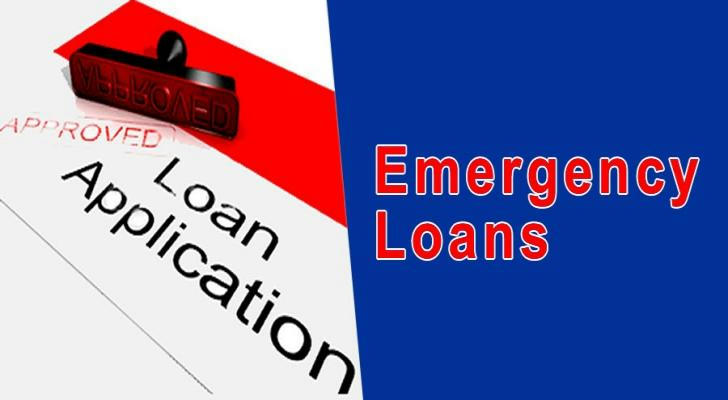Emergency loans are the best choice even for people with poor credit, get funds quickly and easily and keep your funds safe.

There are many ways to apply for an emergency loan even if you have bad credit. By choosing the right lender, preparing basic information documents, providing collateral or a guarantor, and applying online, you can get the funds you need more quickly. At the same time, it is also very important to understand the interest rates and fees to avoid falling into high interest rate traps!
Why can I apply for an emergency loan even if I have bad credit?

• Lenders Specializing in Bad Credit:Some lenders focus on offering loans to individuals with poor credit scores. These lenders are willing to take on more risk in exchange for higher interest rates and fees.
• Mortgage options and alternative loans:By providing collateral, such as a vehicle or property, you can secure a loan, which reduces the lender's risk and makes it more feasible for those with poor credit to get approved. Additionally, online and alternative lenders often have more flexible criteria compared to traditional banks, considering factors beyond just your credit score, such as your income and employment history.
• Short-term loans and Credit Building Programs:Short-term or payday loans are accessible to individuals with poor credit but typically carry high interest rates and fees. Alternatively, some lenders provide loans aimed at assisting individuals in building or repairing their credit. These loans often have lower initial requirements and can serve as a pathway to improving one's credit score.
How to apply for an emergency loan more easily?

• Compare and research multiple lending platforms and institutions: Look for lenders that specialize in providing loans to individuals with bad credit. Online platforms and credit unions may have more available options.
• Prepare Documentation: Gather all necessary documentation, such as proof of income, employment verification, and identification. Having your documents ready can speed up the application process.
• Choose to apply online: Many lenders offer online applications, which are faster and more convenient than traditional in-person applications
Advice on emergency loan options:

• Assess your personal needs: Determine how much money you need and how long you will have to repay it to ensure that the loan product you choose is suitable for your actual needs.
• Compare interest rates and fees: Research the interest rates and additional fees of different lenders. Even in an emergency, choose a loan product with reasonable interest rates and transparent fees to reduce additional burdens.
• Understand the loan terms: Read all the terms in the loan contract carefully, including the repayment period, interest rate, early repayment penalties, etc., to make sure you fully understand all the conditions of the loan.
• Choose a reputable lender: Choose a reputable lender and avoid those that may have hidden fees or opaque terms. Checking user reviews and ratings can help you make an informed choice.
• Check the flexibility of the lender: Some online and alternative lenders may offer more flexible loan terms, including loose credit requirements and flexible repayment options.
• Protect personal information: When applying for a loan, make sure the lender's website and platform are secure and protect personal information from being leaked.
Risky Cases for Emergency Loans:
1. High Interest Rates and Fees
Case: John, facing an urgent financial need, took out a short-term loan without thoroughly reviewing the interest rates and fees. As a result, he encountered extremely high interest rates and additional fees, making the repayment amount far exceed his expectations.
Risk: High interest rates and extra fees increased John’s repayment burden, leading him into deeper financial trouble.
2. Opaque Terms
Case: Sarah applied for a loan without carefully reading the contract terms. Later, she discovered that the loan agreement included hidden fees and unfair repayment conditions, such as high prepayment penalties.
Risk: Opaque terms led Sarah to face additional financial pressure, potentially making the loan unfavorable.
3. Fraud and Scams
Case: Mike found what seemed to be a legitimate online loan provider and applied for a loan. Unfortunately, it turned out to be a scam website. After providing his personal information, Mike found the loan provider had disappeared, and his information might have been compromised.
Risk: Fraud and scams led to the leakage of Mike’s personal information, financial losses, and potentially losing the chance to secure a legitimate loan.
4. Unreasonable Repayment Terms
Case: Emily took out an emergency loan with an extremely short repayment term. She struggled to make payments on time, resulting in additional late fees and penalties, and a significant negative impact on her credit score.
Risk: Unreasonable repayment terms placed undue stress on Emily, potentially harming her credit score and causing additional financial strain.
5. Unsecured High-Risk Loans
Case: Robert applied for an unsecured high-risk loan. Although the lender approved his application, the high-risk nature of the loan meant Robert faced very high interest rates and fees due to his poor credit history.
Risk: The high-risk loan’s exorbitant rates and fees made it difficult for Robert to manage repayments, increasing the risk of default.
Finally, I hope you can avoid all risks, quickly and safely apply for a loan amount that satisfies you, and resolve your financial crisis immediately!

SPECIAL TIPS:
When choosing a loan, it's essential to stay vigilant, carefully select your options, and thoroughly review the loan terms to avoid falling into risky "traps."
Thank you for reading. I hope this article helps you on your journey to securing a loan.
